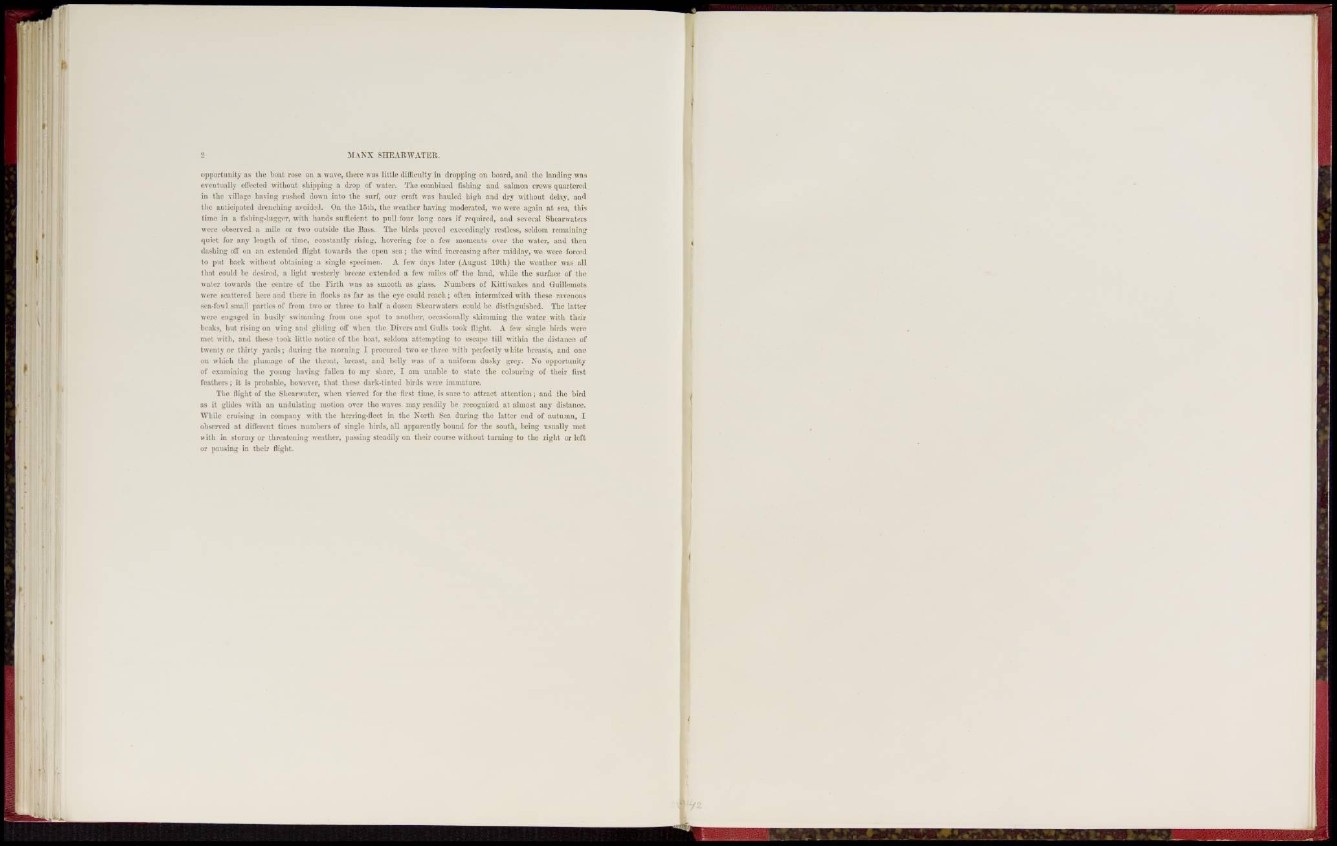
2 M A N X SHEARWATER.
opportunity as the boat rose on a wave, there was little ilillleulty in dropping on board, and the landing was
eventually effected without shipping a drop of water. The combined fishing and salmon crews quartered
in the village baling rushed down into the surf, our craft was hauled high and dry without delay, aod
the anticipated drenching avoided. On the loth, the weather having moderated, vie were again at sea, Ibis
time in a lisliing-liigger, with bands sufficient to pull four long oars if required, and several Shearwaters
were observed a mile or two oulside the Bass. The birds proved exceedingly restless, seldom remaining
quiet for any length of time, constantly rising, hovering for a few moments over the water, and then
dashing off on an extended (light towards the open sea ; the wind increasing after midday, we were forced
to put back wilhuut obtaining a single specimen. A few days later (August lOlh) the weather was all
that could be desired, a light westerly breeze extended a few miles off the land, while the surface of the
water towards the centre of the firth was as smooth as glass. Numbers of Kiuiuakes and Guillemots
were scattered here and there iu flocks as far as the eye could reach ; often intermixed with those ravenous
sea-fowl small parlies of from two or three to half a dozen Shearwaters could he distinguished. The latter
were engaged in busily swimming from one spot to another, occasionally skimming the water with their
beaks, hut rising on wing and gliding off when ihe Divers and Gulls tuok llight, A few single birds were
met with, and these took little notice of the boat, seldom attempting to escape till within the distance of
twenty or thirty yards; during the morning I procured two or three with perfectly white breasts, and one
on which tho plumage of the throat, breast, and belly was of a Uniform dusky grey. No opportunity
of examining the young having fallen to my share, I am unable to state the colouring of their lirst
feathers; it is probable, however, that these dark-tinted birds were immature.
The flight of the Shearwater, when viewed for the first time, is sure lo attract attention; and the bird
as it glides with au undulating motion over the waves may readily be recognized at almost any distance.
While cruising in company with the herring-ilcet in the North Sea during the latter end of autumn, I
observed at different times numbers of single birds, all apparently bound for the south, being usually met
with in stormy or threatening weather, passing steadily on their course without turning to the right or left
or pausing in their flight.